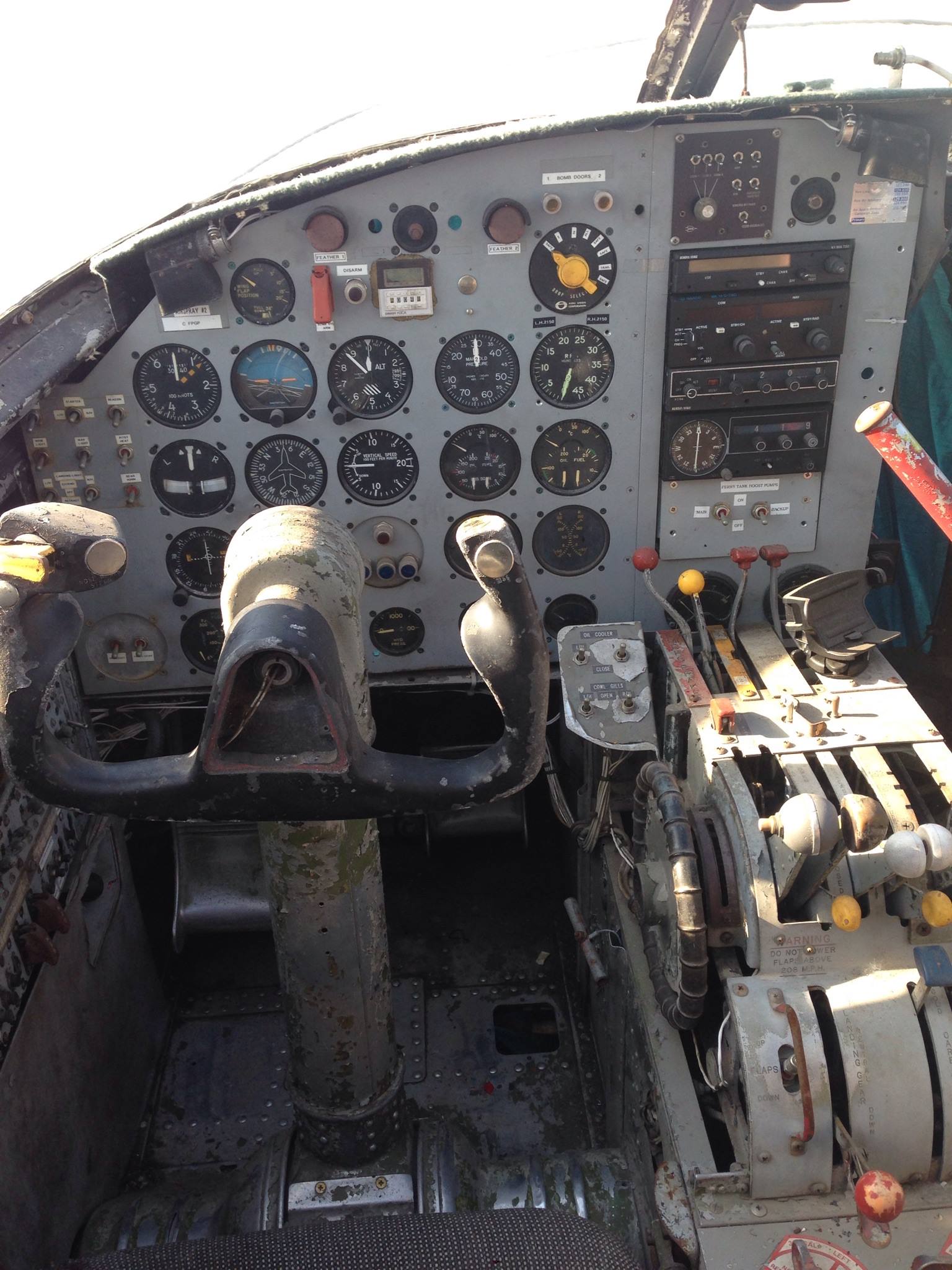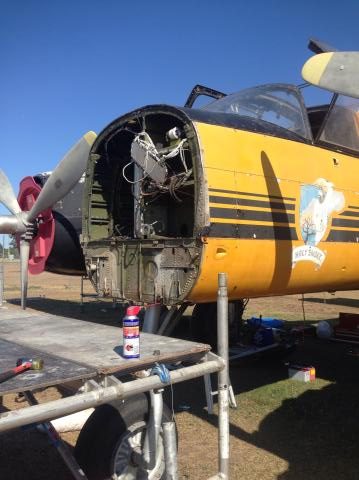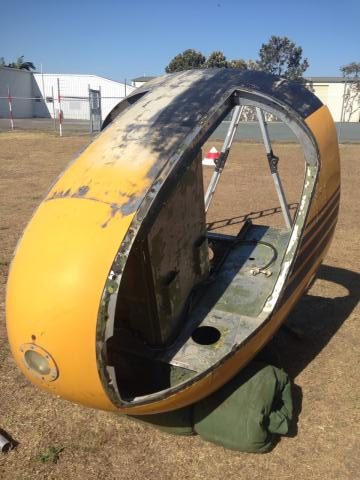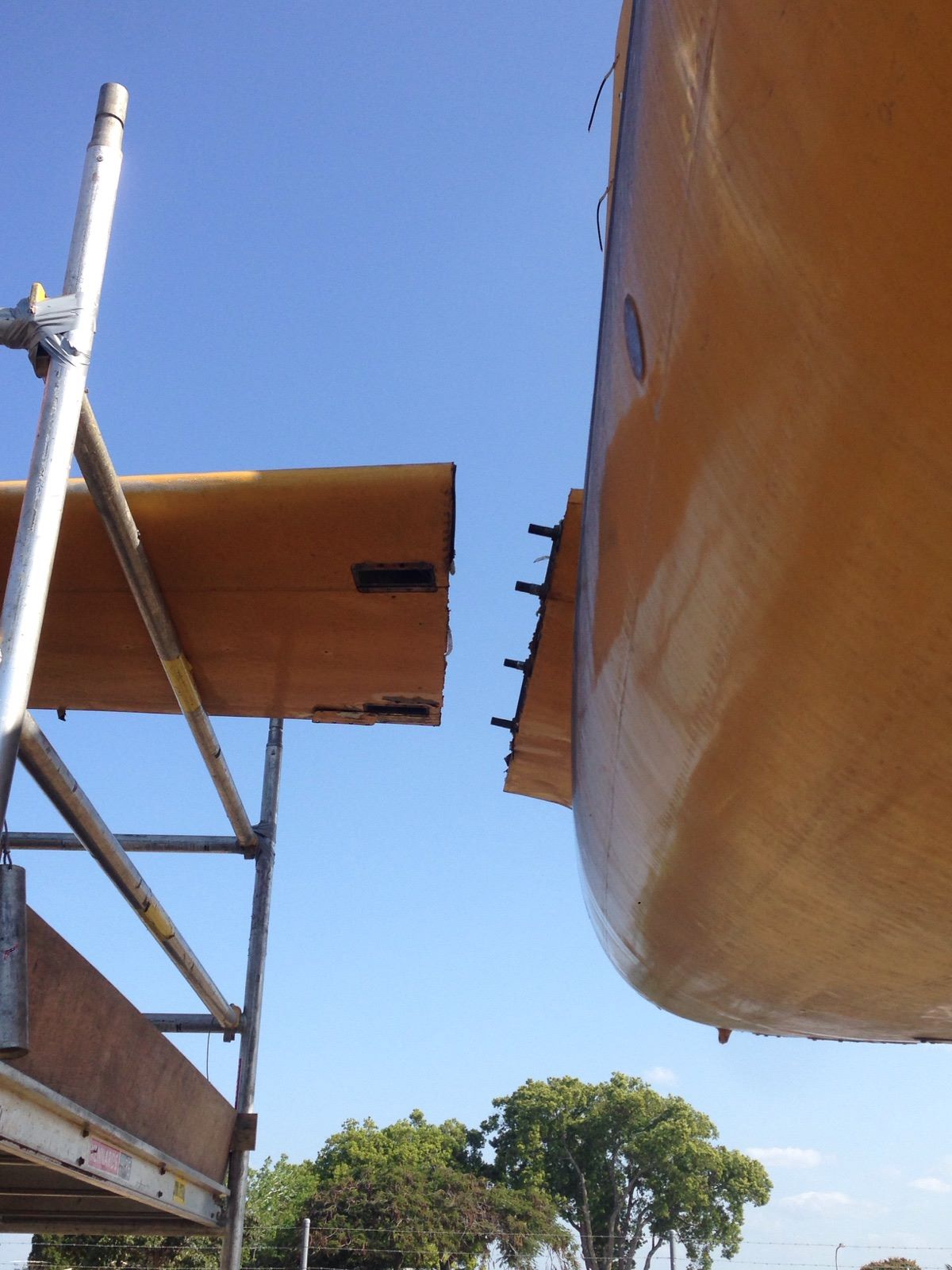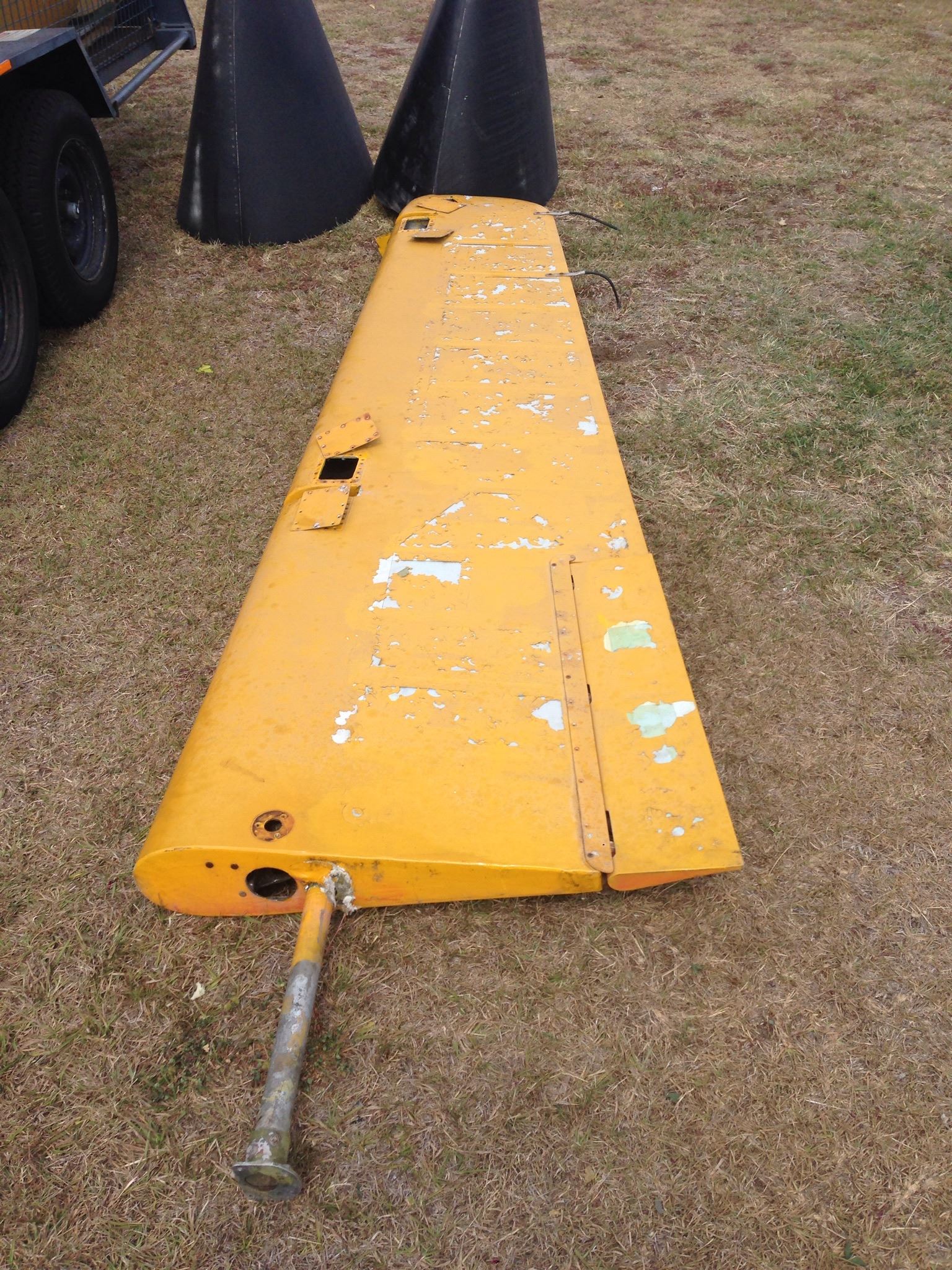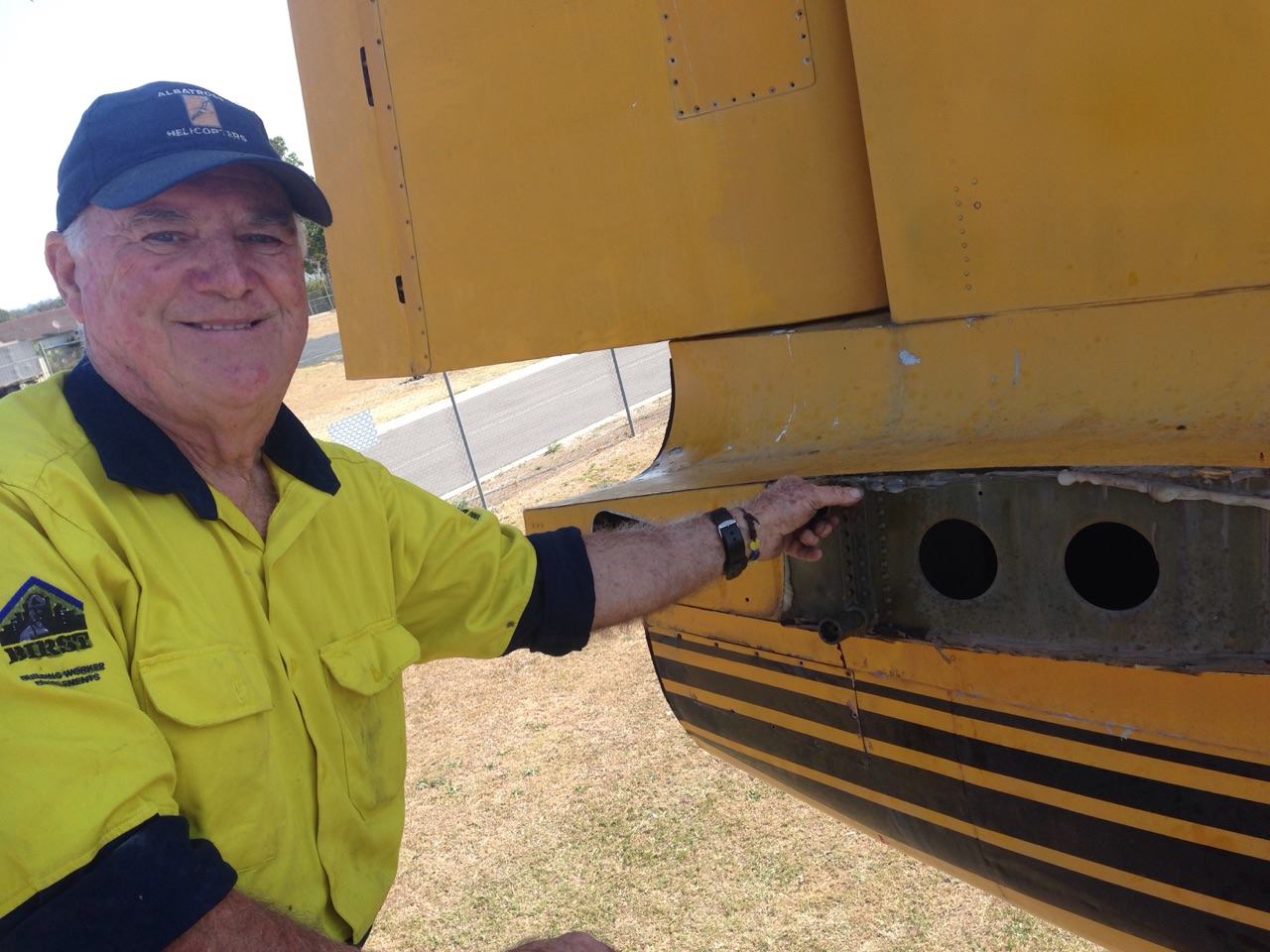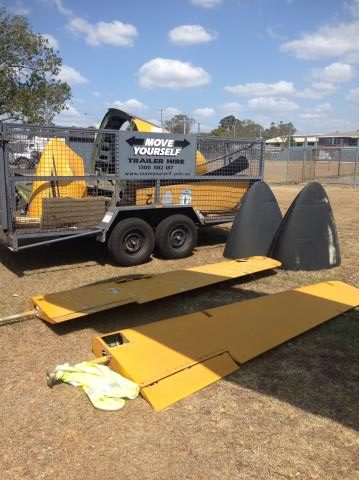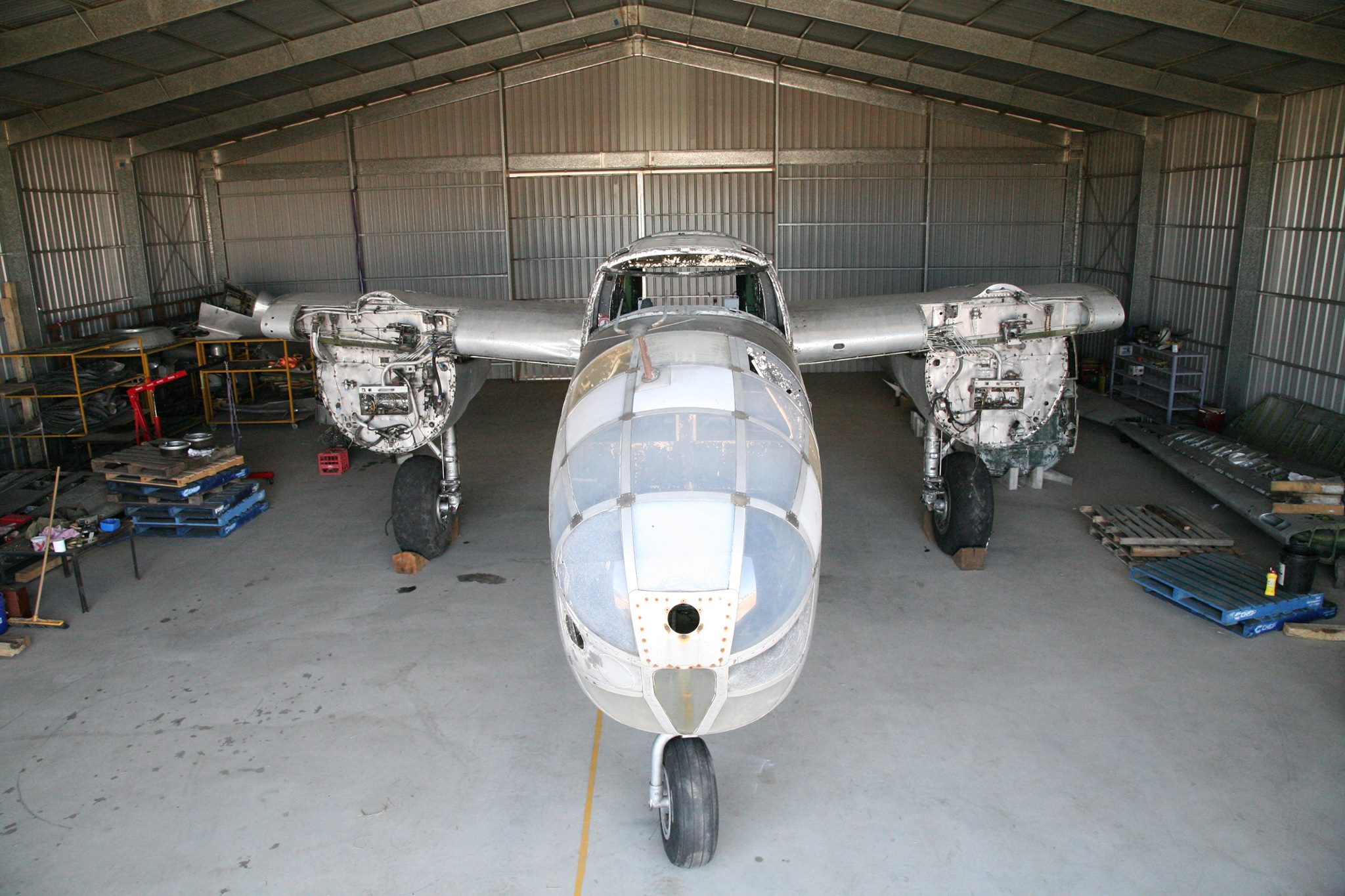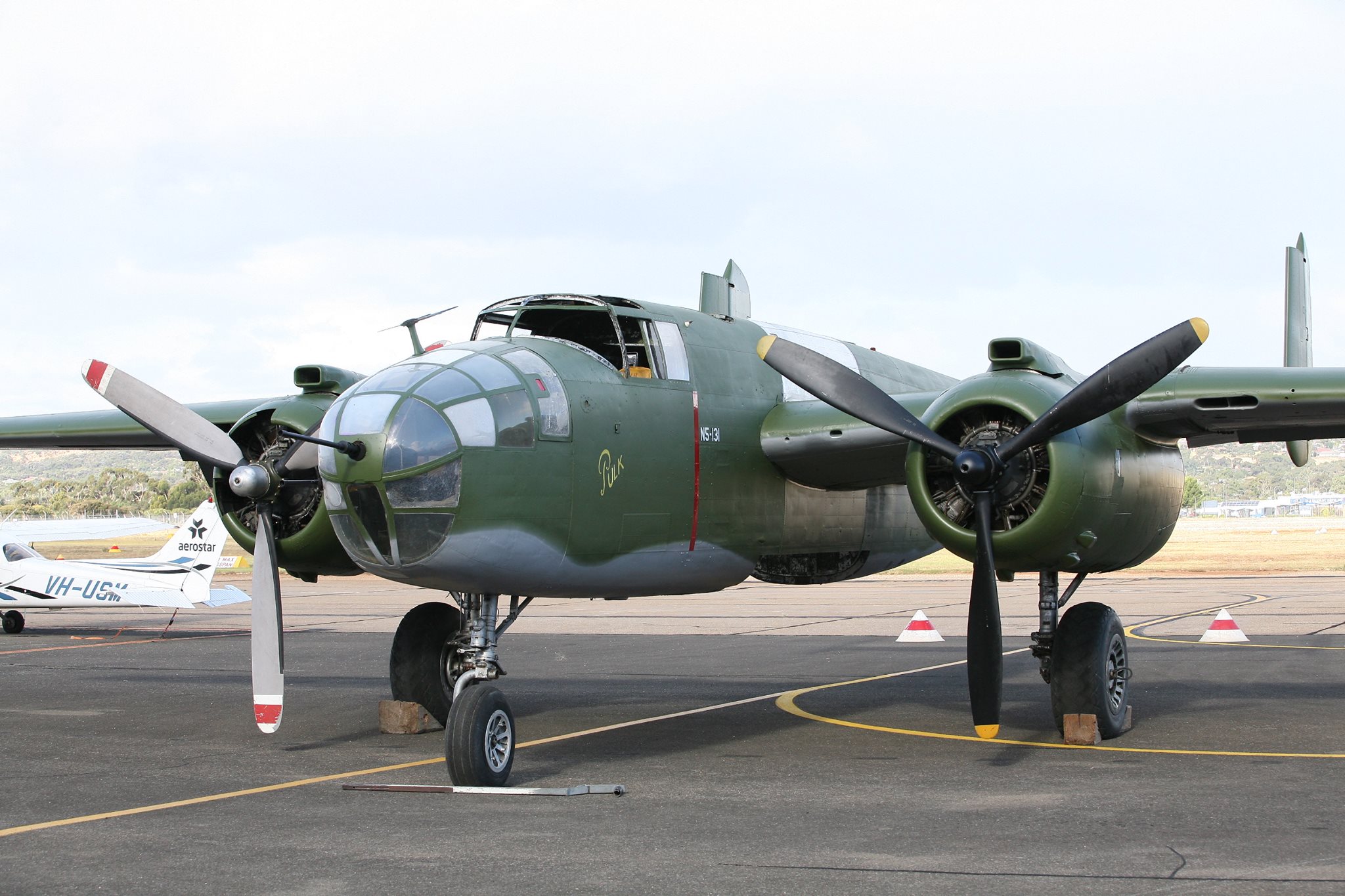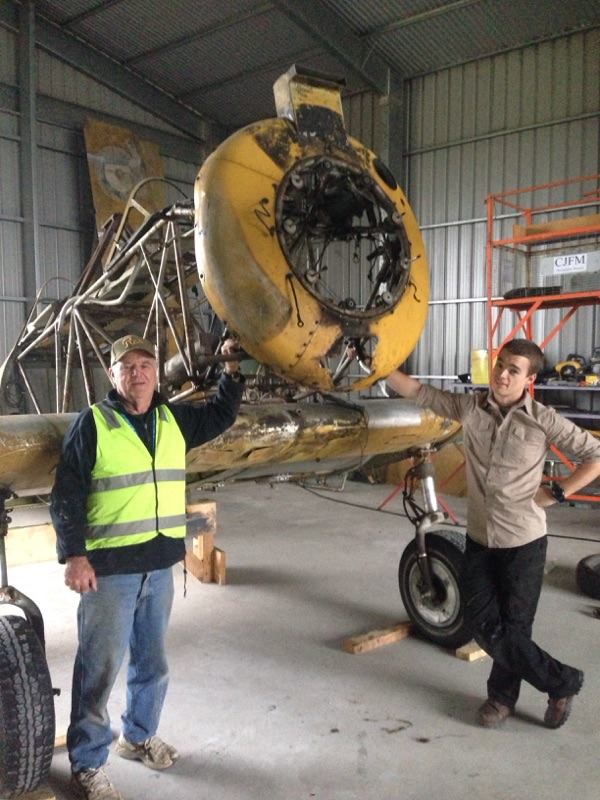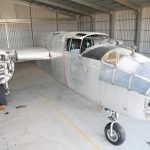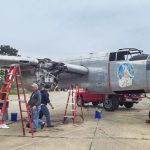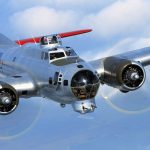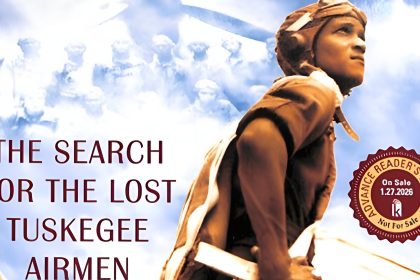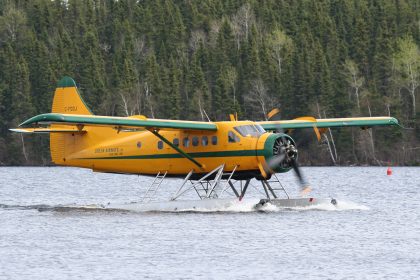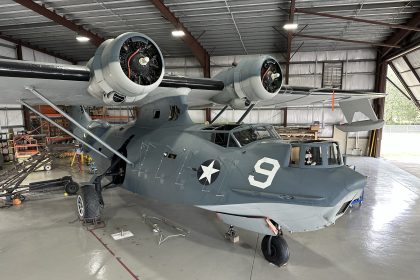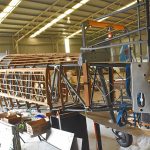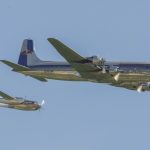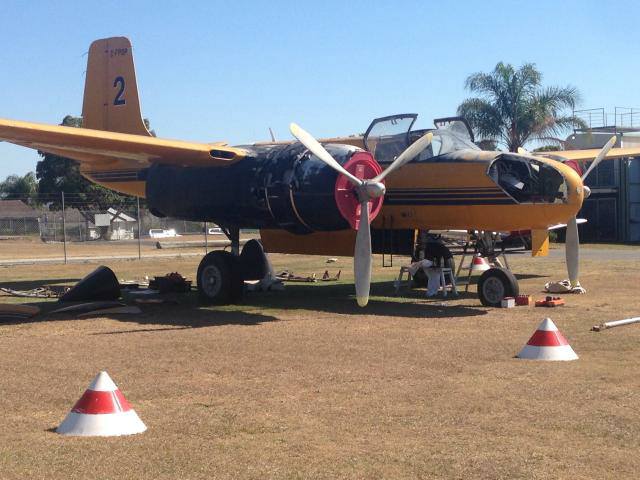
Reevers Warbirds has commenced the move of their Douglas A-26C Invader from Archerfield Airport in Brisbane, Queensland to her new home at Parafield Airport in Adelaide, South Australia.
This Invader once flew with the US Army Air Force as 44-35898, and technically became a B-26C in 1948, along with the other Invaders remaining in the U.S. inventory, following the retirement of the Martin B-26 Marauder. She first joined the US civil registry in 1961, becoming N3328G under the ownership of Lear Inc. (of Learjet fame). John Lear, William Lear’s son, flew her during the 1968 Reno Air Races as Race 76, with an average track speed of 284mph…. certainly not a world-beater for the day, but not bad for such a large aircraft! Air Spray Ltd. or Red Deer, Alberta bought the Invader in 1971 and converted the vintage attack aircraft into a fire-bomber. She received an all-over yellow paint scheme with black trim, the company colors, and a large number 2 on her tail. The Invader served faithfully in the fire-bomber role for the next three decades, with her last fire-fighting season being in 2004 at around the time when the company was winding down their prodigious fleet of A-26s (they owned 22 examples at one point!). Randall McFarlane, bought the aircraft in 2005 and had her flown to Australia in an epic, multi-stage flight in October, 2006. Sadly McFarlane did little with the aircraft once she arrived downunder, and she has been dormant ever since. Reevers bought the aircraft in 2014 adding her to their growing stable of fascinating projects.
Present work on moving the Invader involved removing the flight control surfaces, horizontal stabilizers and the nose section. These parts have already made the 1,200 mile journey to Adelaide. Next, the team will break down the wings and fuselage and transport these by road to her new home as well. The aircraft will initially go into storage while Reevers assesses what needs addressing to return her to flying condition, and how best to do it.
As already mentioned, Reevers has a fascinatingly eclectic collection of aircraft in their stable, and seem to have a penchant for apparently lost causes. First among these perhaps is B-25J Mitchell 44-31508, which sat forlornly outside in Franklin, Virginia for over a decade. She was in a terrible state when Reevers stepped in to rescue her. WarbirdsNews covered the recovery back in 2015. Reevers has made great progress with this aircraft, rolling her out for the public earlier this year following a lot of work to get the Mitchell presentable again. They aim to restore her to flying condition, which will likely take several more years of hard work.
Reevers also has a North American Yale project, and incredibly, a Republic P-43 Lancer in their sights as well, but more on that another time. WarbirdsNews will be bringing you more information as it arrives on these fascinating projects!
With much thanks to Phil Buckley for bringing us this story and providing a lot of information for the article, and to Reevers Warbirds for providing the images!








